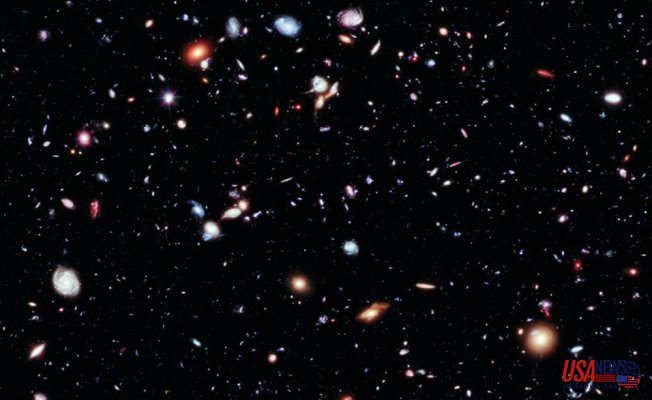CAPE CANAVERAL (Florida) -- For the next 10 years, astronomers in the United States have put the search for extraterrestrial intelligence at the top of their priority list.
The National Academy of Sciences, Engineering and Medicine published a Thursday report that stressed the importance of continuing the search for potential habitable planets around other stars. This is in addition to the "extraordinary progress" made. They stated that the ultimate goal is to take pictures of any Earth-like planets out there.
"Life on Earth could be the result of a common process or it may require so many unusual circumstances that we are not the only living thing in our galaxy or the entire universe. The report said that either answer is profound.
"The next decades will determine if humanity is alone."
High on the list: Exploring the origins and evolutions of black holes, neutron star, galaxies, and the whole universe.
The 614-page report also stressed the need to have more diversity in astronomy's ranks, which are still dominated by men. NASA should consider the diversity of its science teams when allocating money for research and projects.
This survey is conducted every ten years and includes input from many U.S-based scientists.
According to the latest report, NASA should create a new office that will oversee all space observatories and overlap missions over the next decade. The report recommended that a telescope significantly larger than the Hubble Space Telescope be built. This telescope would be capable to spot planets 10 billion times brighter than their stars. This telescope, once the technology is ready, could launch in 2040s. It will be followed by mega observatories that cost billions.
The report also stressed the importance of smaller and more modest missions. It stated that launching one spacecraft per decade at a cost of $1.5 billion is a way to balance science and timeliness.
In the report, it was noted that major projects have been subject to cost overruns in the past and were at risk of being delayed. NASA's James Webb Space Telescope, which was designed to explore the early universe and the atmospheres of other planets, will finally launch next month. The report said that the launch of the James Webb Space Telescope will be "a significant occasion that will influence the course of astronomy, astrophysics and the future decades".
NASA, National Science Foundation and Energy Department sponsored the report. It also noted that the survey was done during a crisis. The pandemic has highlighted the importance of science and the need for scientific research. However, the final economic and social effects of the pandemic are still unknown, which adds to uncertainty about the future.
The report called on NASA, the National Science Foundation, and Energy Department to consider harassment and discrimination when funding projects.












